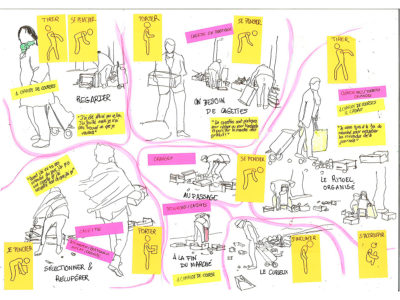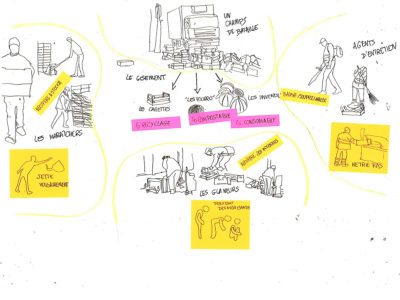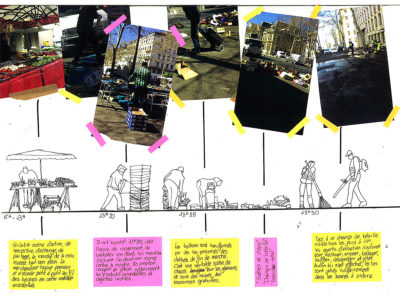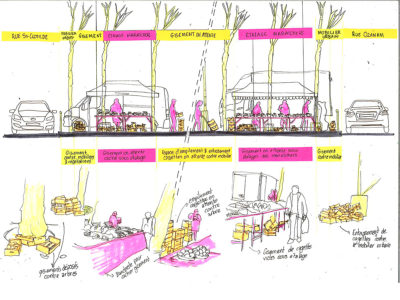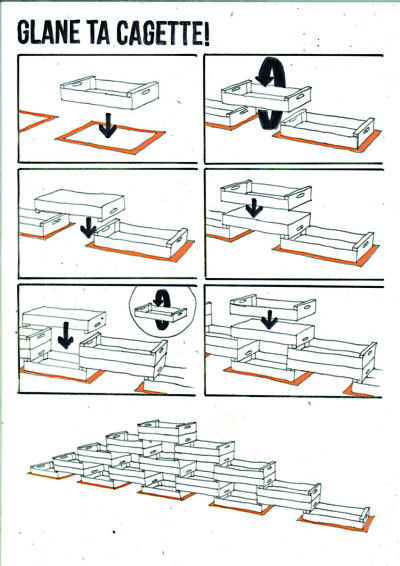Et si concevoir de nos jours passait dans un premier temps par le réemploi des ressources existantes en leur trouvant une seconde vie ?
Dans un souci de réutilisation de ces ressources, mon travail s’inscrit dans ce concept d’économie dite circulaire : Interroger la pratique du réemploi qui offre une nouvelle éthique à la matière ainsi qu’une nouvelle relation entre l’homme et son environnement.
L’objet avant la forme en adoptant différentes postures ; celle du designer-glaneur ou encore celle du designer-bricoleur :Imaginer et rendre opérationnelle une ressourcerie « La Martinriauthèque » ou proposer un protocole d’usage d’un gisement d’objets, pour que se rencontrent glaneurs et cagettes sur le marché de la Croix-Rouss
Pour citer Antoine Lavoisier, « Rien ne se perd, rien ne se crée, tout se transforme ».
What if designing today meant reusing existing resources thus giving them a second life?
Keeping in mind that resources need to be preserved, my work comes within the scope of circular economy. My approach has the willpower to promote the practice of reusing, which offers a new ethics to materials as well as a new relationship between humans and their environment.
My approach as a designer was to think first about final objects before thinking about their form— Form follows objects.
By adopting different angles, from the point of view of a designer-gleaner and also from the perspective of a designer as handyman, I was able to experiment with this approach of revaluing resources.
Reasserting the worth of materials thanks to « La Martinriauthèque » or giving back some value to the deposit of the Croix-Rousse market thanks to a protocol were two significant experimentations of my study.
To quote Antoine Lavoisier, « Rien ne se perd, rien ne se crée, tout se transforme »: « Nothing is lost, nothing is created, everything is transformed »

